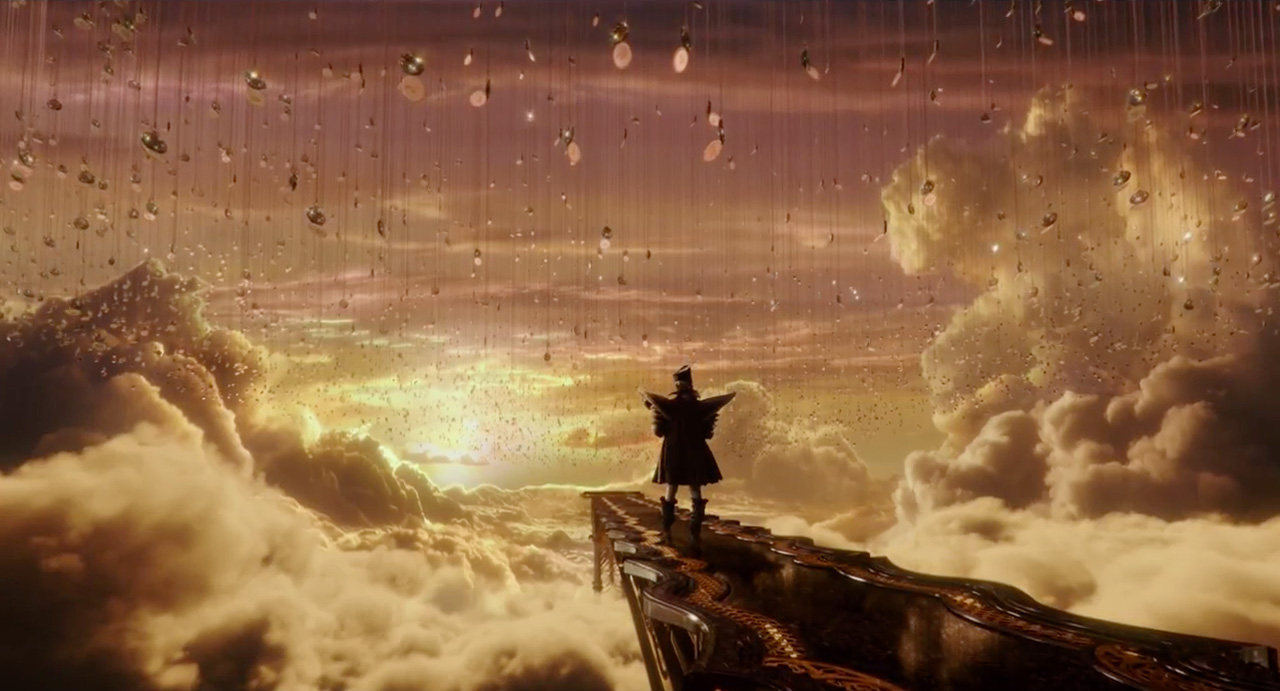
An argument can be made that Alice Through the Looking Glass is more prequel than sequel since so much of it centers on traveling in the past and being told the origin stories of some important characters. James Bobin’s mediocre follow-up to Tim Burton’s equally middle-of-the-road Alice in Wonderland (2010) finds Alice Kingsleigh, played more formidable and less plucky than before by Mia Wasikowska, back in Underland, where she’s informed by the White Queen (Anne Hathaway) and the rest of the gang (White Rabbit, The Cheshire Cat, Tweedledee and Tweedledum) that her old friend The Mad Hatter (Johnny Depp) is dying from what is essentially a broken heart. You see, the Hatter recently stumbled across a tiny hat, one he recognizes as the very same hat he made for his stern father in an attempt to curry approval as a child. Hatter is suddenly grief-stricken at the thought that perhaps his family did survive a fiery attack on their village by the Red Queen’s Jabberwocky years ago, after all. He reasons if the hat survived, maybe his family did, too? But, if they are alive…where are they? These questions weigh on Hatter and torment him; they’re made all the more heavy when Alice visits and is reticent to feed into what she perceives to be Hatter’s delusion. Locks of his vibrant orange hair fade to white, serving the same function as an hour glass. We know that once his hair has gone full Doc Brown, that’s a wrap for the Hatter. It was interesting to see the Mad Hatter as pale and listless, dressed in all white, as opposed to his usual appearance where he looks like a photo negative of Elijah Wood in a bad wig.
The White Queen tells Alice about the Chronosphere, a small gadget that bears a striking resemblance to Hermione’s Time-Turner in the Harry Potter series. It’s a device owned by Time, played officiously and half-menacingly by Bobin’s longtime collaborator, Sacha Baren Cohen. Alice plans to take the Chronosphere, go back in time, and find out what really happened to Hatter’s family. All the while, the now-exiled Red Queen has her own plans for it as well. What follows are some surprisingly bland origin sequences for both Hatter and Red Queen. For two such larger-than-life characters, you’d think how and why they came to be would have an element of extravagance, at the very least. I won’t spoil anything by giving away too many details, but I honestly don’t think I’d be ruining their reception if I did.

While the production design is solid and the CGI is on point, the movie fails more than it succeeds in large part due to a lack of cohesion within the narrative. I found myself being taken from scene to scene, from set piece to set piece, but never actually transported. There was so much movement, yet I was never moved. The story, bearing almost no resemblance to Lewis Carroll’s novel, feels more like fan fiction. It introduces mature and timely themes like mortality and Girl Power/female self-actualization, but it never really goes anywhere interesting with them. At one moment, I was being introduced to the Hatter’s family and before I could even get a good look at them, Alice is once again crash-landing the Chronosphere (oh yeah, it transforms into a vehicle) Launchpad McQuack-style into another setting and time.

With that in mind, the movie does earn some high marks. A strength of the previous film was the casting, and that is certainly handled well in ATTLG. The returning cast remains strong and it was nice to hear Alan Rickman’s voice one more time, whose Absolem has gone from caterpillar to butterfly over the course of the two movies, this last of which being dedicated to his memory. A fun new addition to the world is Cohen’s Time character and, by extension, his lair. It has two separate rooms filled with hanging clocks, one room for the living and one for the deceased. Time plays the dual role of Grim Reaper (in a sense) and a curator of chronology. He doesn’t have time for Alice (pun intended?) and he’s not interested in why she needs his help. He has work to do. However, Time relays that in a far more interesting way, one that feels more Carrollian with its use of words and alliteration than I’d be prepared to attempt. Time also has little helpers called his Seconds. They’re cute and adorable and generally bobble about, doing whatever he tells them to do. Later, in a cool sequence, they combine into a much larger and fearsome creature when the alarms are sounded and Alice tries to make off with the Chronosphere. What ensues is an exhilarating chase, first through Time’s clock dungeon and then through the Ocean of Time, which looks the way you’d think it’d look but it’s still quite captivating. There’s also a fun scene with Time being a guest at the Mad Hatter’s tea party. I wanted more of that.

It’s a shame such a strong cast (the aforementioned, along with Stephen Fry, Helena Bonham Carter, Michael Sheen, to name a few) did not have much to do in the film. Bobin, who directed The Muppets and created Da Ali G Show, clearly has a grasp of silliness and comedic timing, but he seems to have only brought some of the requisite tools needed to make this kind of film. Much of it is hollow and I often found myself not invested in what happened. I really wanted to care; my eyes were entertained by the visuals but the rest of me was underwhelmed. Also, here’s a money-saving tip: If you’re going to see this film, skip the 3D. It added very little, if anything, to my viewing experience.
Alice Through the Looking Glass opens in theaters this Friday, May 27th.





